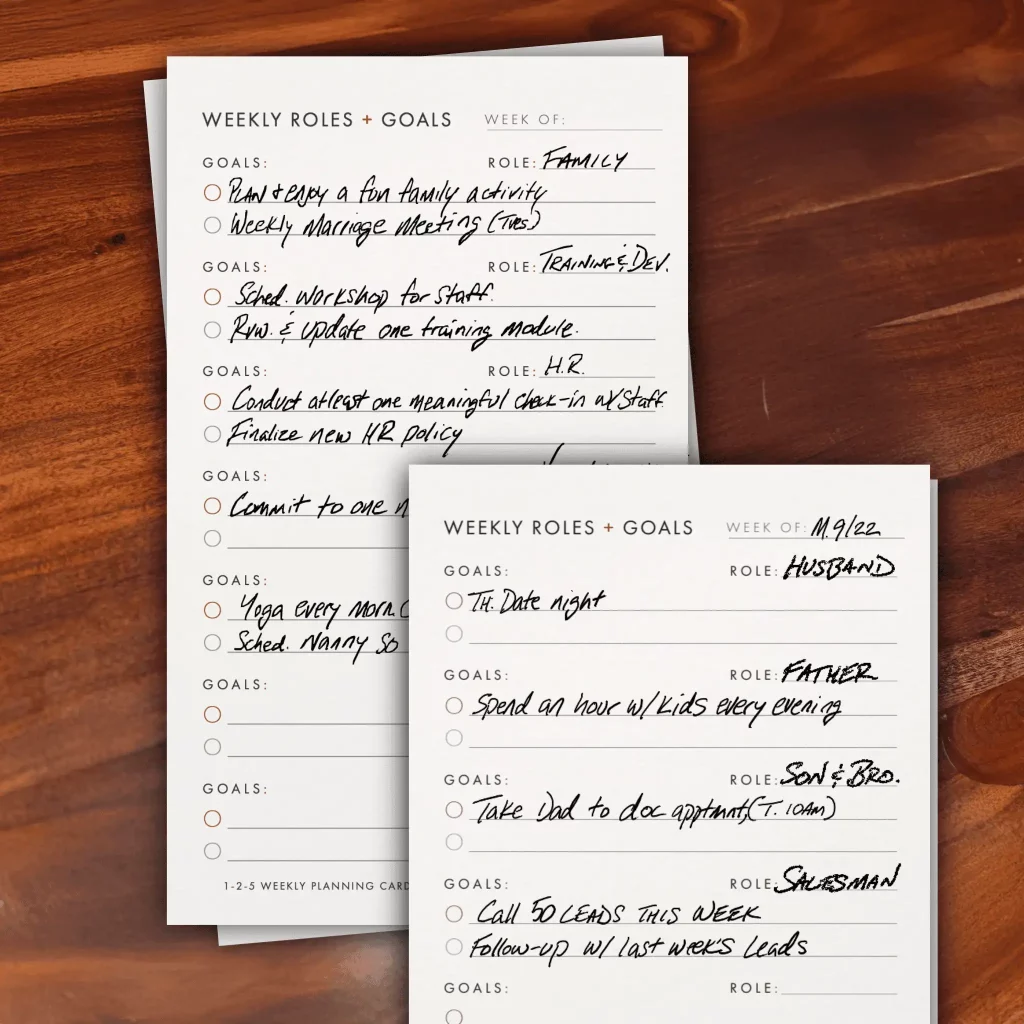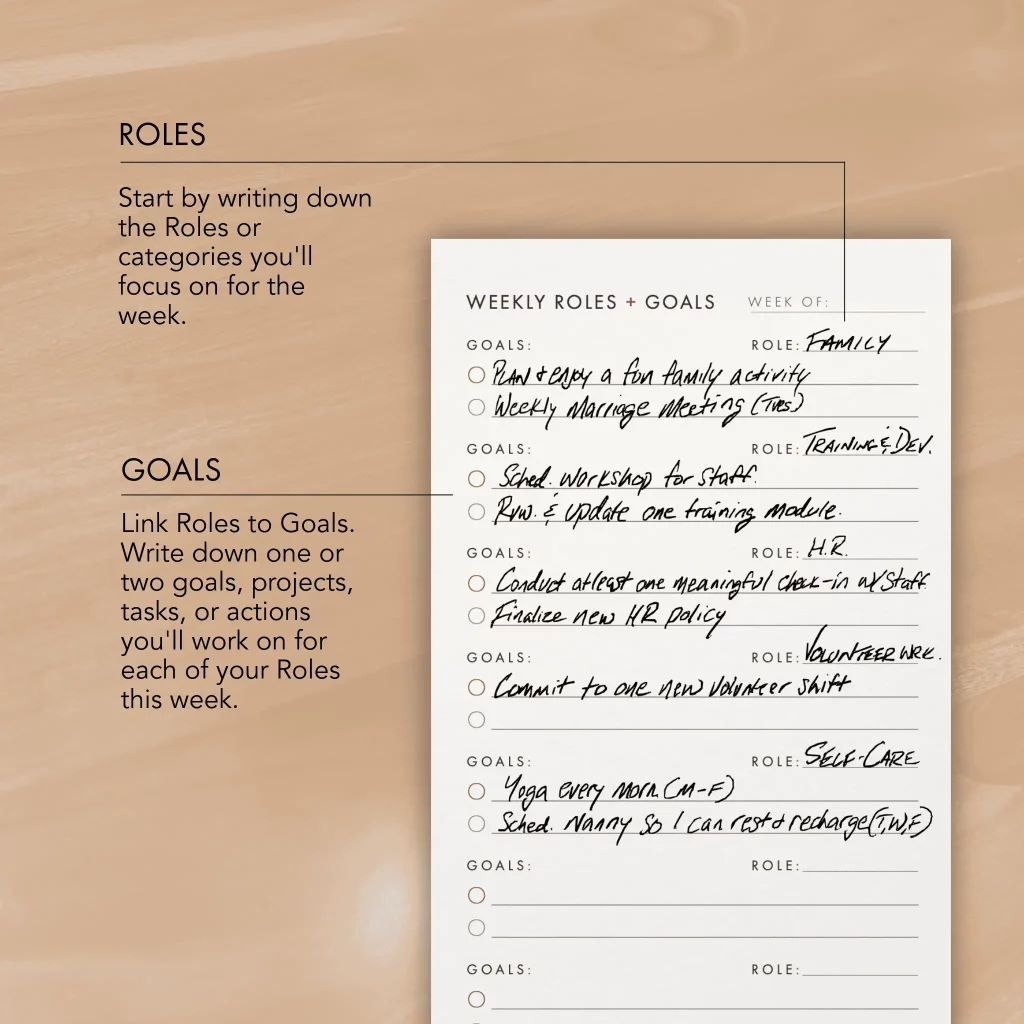Principle #3. Plan Weekly with Roles and Goals
You live your life in terms of roles. We all do. Our roles represent our responsibilities, relationships, and areas of contribution. You have important roles in your family, at work, in your community, and in other areas of your life as well.
And when life gets hectic—when it feels like you’ve got so much to do that you don’t even know where to start—it helps to reconnect with your roles and clarify the goals you’ve got for each of them.
For example, think about the many roles you assume in your personal and professional life…
- As an individual, you might have the roles of: Mother, Wife, Volunteer, and Talent & Development Manager.
- Or you might have roles like: Family Man, CEO, Personal Development, and Author.
Everyone’s got different roles in life; we all wear multiple hats.
The key to handling these roles like a peak performer is not to strike a balance, but to give each role the appropriate amount of energy and focus needed within the context of a week…
During some weeks, your professional roles (CEO, Entrepreneur, HR Manager, etc.) may require the bulk of your time and energy.
Other weeks, you might need to redirect your time and energy into your personal roles (Father, Son, Husband, etc).
Naturally, each of your roles have certain responsibilities attached to them…
To put it another way:
You’ve got goals for each of your roles.
Many people like to take all these goals + responsibilities, and put them on a list.
That’s great.
But that list grows… and grows, and continues growing — until it becomes more overwhelming than Tax Day.
And how the heck could you possibly expect to be productive and perform at your peak when you’re stressed to gills?
You simply can’t. None of us can.
So, what’s the most effective way to deal with this issue?
Simple. 👇
At the beginning of each week, write down your roles + connect 1-2 goals to each of them.
(Ideally, you’d do this during your weekly review.)
Let me show you how to do it…
Actionable insights:
Create a weekly plan with Roles and Goals.
- Grab a clean sheet of paper and draw a vertical line to form two columns: Label the one column “Roles” and the other “Goals” (as shown in the image of the Weekly Planning Cards by 125Method above).
- Write down all of your current roles under the “Roles” column—personally and professionally. Here are some example roles to reference as you write yours down:
- Examples of professional roles:
Teacher • CEO • Co-Founder of… • Owner • Artist • Entrepreneur • Trainer • President • Director • Writer • Athlete • Student • Speaker • Executive • HR Professional • Counselor • Instructor • Marketer • Assistant • Coach • SVP • Consultant • Talent & Development Manager • Territory Manager • RM • Painter • Creator • Copywriter • Photographer • Lawyer • Engineer • Doctor - Examples of personal roles:
Friend • Personal Development • Self-Care • Daughter • Son • Activist • Caregiver • Grandparent • Volunteer • Mother • Father • Husband • Wife • Girl Scout • Big Brother
- Examples of professional roles:
A few things to keep in mind as you write down your roles:
- Don’t worry about getting this “right” the first time. Just jot down each of your active roles (and keep in mind that you can always revise and update them as necessary.)
- No more than seven roles total. The human brain has trouble managing any more than that(1). If you end up with more, combine related roles until you’ve got seven or fewer. For example, when my list of roles grew to more than seven, I combined my roles of Father, Husband, and Son into a single role called Family Man. Bada-bing, bada-boom.
- Define your roles as you see fit. If you have multiple responsibilities at work, you might want to segment your roles. For example, you might need one role in Management and another in Marketing. Or, you might decide to combine them both into a single role. It’s up to you to define your roles in a way that works for you.
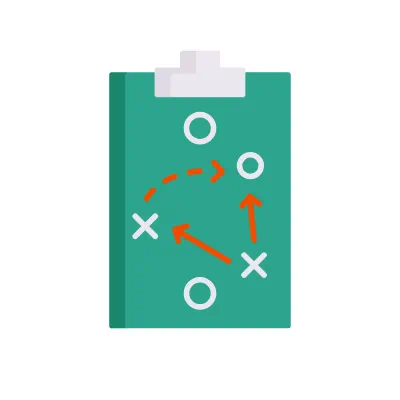
Step 2.
Connect Goals to your Roles.
Now that you’ve clarified your Roles, let’s link ’em up with some Goals:
- Think about the roles you’d like to invest time and energy into this week.
- Then, under the “Goals” column, write down 1-2 goals you’ll work on or accomplish within each of your roles this week. By the time you’re done, you should have something that looks like this:
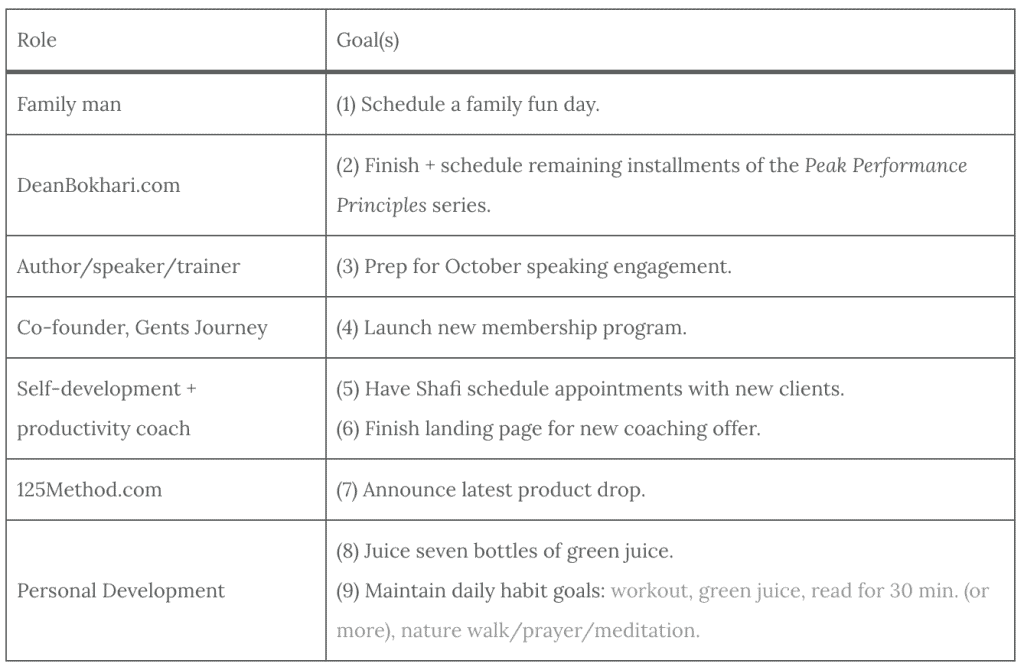

Step 3.
Schedule your weekly goals.
You’ve clarified your roles and connected at least one weekly goal to each of them. Now, let’s schedule time in your week to work on these goals:
- Open your calendar or planner. Digital or paper, whatever works for you.
- Give your goals a day of the week. Determine which day of the week you’ll work on each of the major goals that flowed from your roles.
- Don’t worry about exactly what time of day you’ll work on each goal yet. For now, just give your goals a day of the week. By the time you’re done, you should have something major to work on for each day of the week:
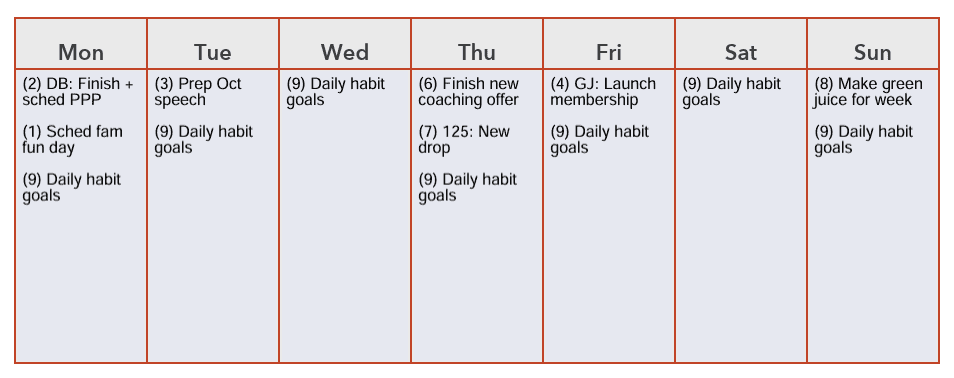
You should now have a clear view of the week ahead.
Feels good, right?
Here are a few optional steps to consider as we close this one out:
- Aside from the roles and goals you’ve just defined, you probably have meetings, appointments, and other stuff happening throughout the week. You might already be doing this, but in case you aren’t:
It’s a good idea to populate your calendar with anything that has a predetermined time attached to it (ex: “Monday @9am-10am: Appt. w/Dr. Martin”).
- It might also be a good idea for you to allocate specific blocks of time to work on each of your weekly goals. Alternatively, you might find it more natural to plan that part out on a day-to-day basis.
For example, you might wake up each morning and use something like the 1-2-5 Time Blocking Pad to prioritize and create a time-blocked schedule for the day ahead.
Do what works best for you.
This isn’t about rigidity; it’s about doing what you need to do to perform at your peak on a perpetual basis.
And that’s a wrap for Peak Performance Principle #3!
If you go through this Roles + Goals planning process once a week, you will be more productive. You’ll also feel at ease about the week ahead—knowing you’ve got a handle on what matters most to you.
Hope you found this valuable,
—Dean.

Dean Bokhari
Author, Speaker, Peak Performance Coach
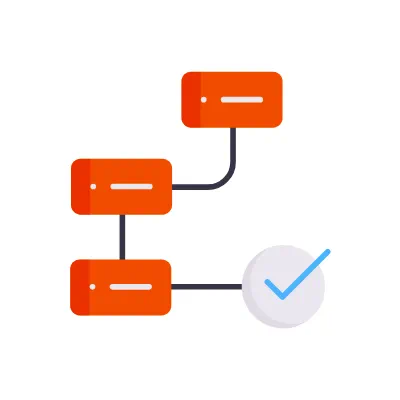
Triple your performance + productivity
at work, at home, and everywhere in between—with the Peak Performance Training Program.

Need personalized peak performance + productivity guidance?
Apply for private coaching with Dean Bokhari.
Footnotes:
- National Institutes of Health (US); Biological Sciences Curriculum Study. NIH Curriculum Supplement Series [ Internet ]. Bethesda (MD): National Institutes of Health (US); 2007. Information about the Brain. In: NCBI Bookshelf. Available from: NCBI Bookshelf ID: NBK20367


